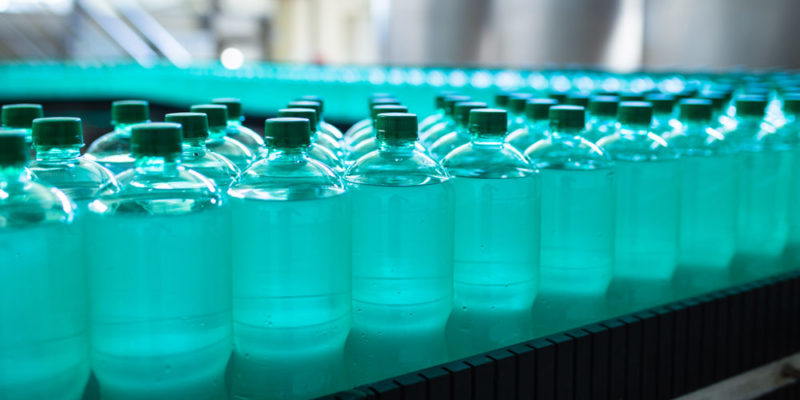We explain what plastic is, how it was discovered and the various uses it presents. Also, its characteristics, classification and more.
What is plastic?
Plastic is a material that is made up of organic macromolecules, resins, or other substances . It is a large organic polymer .The plastic is easy to mold when exposed to high temperatures , although if the temperature is too high it can decompose. For this reason, it is said that plastic has properties of flexibility and elasticity since it adapts to certain shapes.
Once it reaches its final shape, the plastic turns out to be quite strong and difficult to degrade . Its utilities are varied, it is used for the construction of bottles, tables, vases, among others.
Deterioration resistance, impermeability and low cost make this equipment in one of the most widely used in industry and in everyday consumption. However, this material is not easy to recycle, so it pollutes the environment for thousands of years.
Discovery of plastic
The discovery of plastic-type polymers began in 1600 BC. C. By that time, certain natural rubber mesoamericanas cultures used to produce solid objects . Then the rubber hardening process was optimized in 1839. Thus, over the years, new plastic materials such as phenolic resin and Bakelite were discovered, as well as the methods to process them.In 1860, in a contest whose reward was $ 10,000, John Wesley Hyatt proposed to dissolve cellulose in a solution of ethanol and camphor, and obtained celluloid (considered the first thermoplastic) with that simple process. At that time, they were looking for a substitute for natural ivory (which was used to make, for example, billiard balls).
Surprisingly, this invention did not win the first prize, but it gave way to the invention of this type of plastic.
Types of plastic
 Types of plastic according to their origin :
Types of plastic according to their origin :
- Natural plastics . They are polymers derived from products of natural origin. For example: cellulose, rubber and casein. In turn, they can be:
- Cellulose derived plastics . They make up celluloid, cellophane and cellon.
- Rubber-derived plastics . For example: rubber and ebonite.
- Synthetic plastics . They are made by humans by using mostly petroleum products . For example: polyethylene bags.
Types of plastic according to their use :
- Polyethylene terephthalate . It is used to make food containers, soft drinks, oils, syrups, medicines, etc.
- High density polyethylene . It is used to make drinking water pipes . Toys and prosthetics are also made, among other uses.
- Low density polyethylene . It is used to make toys, bags, plates and cutlery.
- Thermoplastics . They are plastics that at high temperatures become liquid , but when they cool down they become vitreous (solid and rigid bodies to a certain extent, which deform with a certain elasticity). Once in their solid state, if they are reheated, they can be molded again. For example: nylon and rubber derivatives.
- Thermostable . They are plastics that when heated become liquid, but if cooled they become rigid and cannot be heated again to melt them. For example: Bakelite, polyesters and phenol polymers.
Plastic characteristics

- Its production cost is low . It can be shaped as desired as long as it is exposed to the required high temperatures and the appropriate mold is available. This feature makes it a low-cost material to produce, popular for so many uses.
- It can be colored or not colored . Plastic is easily colorable if pigments are used.
- It can be solid or semi-solid . Certain plastics are very strong, and can be used to make containers to hold everything from edible food, drink to industrial products.
- It is an excellent electrical insulator . Plastics do not conduct electricity . However, in the event of a fire, the plastic covering the wires of the cables that conduct electricity can melt and expose them. On certain occasions, it is used as a thermal insulator although it cannot withstand very high temperatures.
- It is resistant to corrosion and degradation . This material is used to produce containers that serve to contain acids and generate chemical reactions within them without affecting the container.
Degree of toxicity and recycling of plastic

Plastic is resistant to deterioration. However, it is important to mention that in many cases resistance is not synonymous with healing . A plastic bottle may or may not be reusable, depending on the type of plastic the bottle is made of. Each plastic object must have a label that specifies whether it is reusable or not.
Plastic pollution
Many plastics, when subjected to high temperatures, transform to a liquid state, releasing various highly toxic substances for both humans and the environment .
On the other hand, the deterioration of this plastic (although it is very stable over time) is polluting after hundreds of years, so it is very difficult to recycle.
The above content published at Collaborative Research Group is for informational and educational purposes only and has been developed by referring reliable sources and recommendations from technology experts. We do not have any contact with official entities nor do we intend to replace the information that they emit.
Abubakr Conner brings a diverse skill set to our team, and covers everything from analysis to the culture of food and drink. He Believes: "Education is the most powerful weapon that exists to change the world." .
Leave a reply
Your email address will not be published. Required fields are marked *Recent post

Sport: What Is It, Types, Risks, Features, Characteristics and Examples

Dogs: Emergence, Features, Characteristics, Feeding and Breeds

Story: Definition, Elements, Structure, Features and Characteristics

